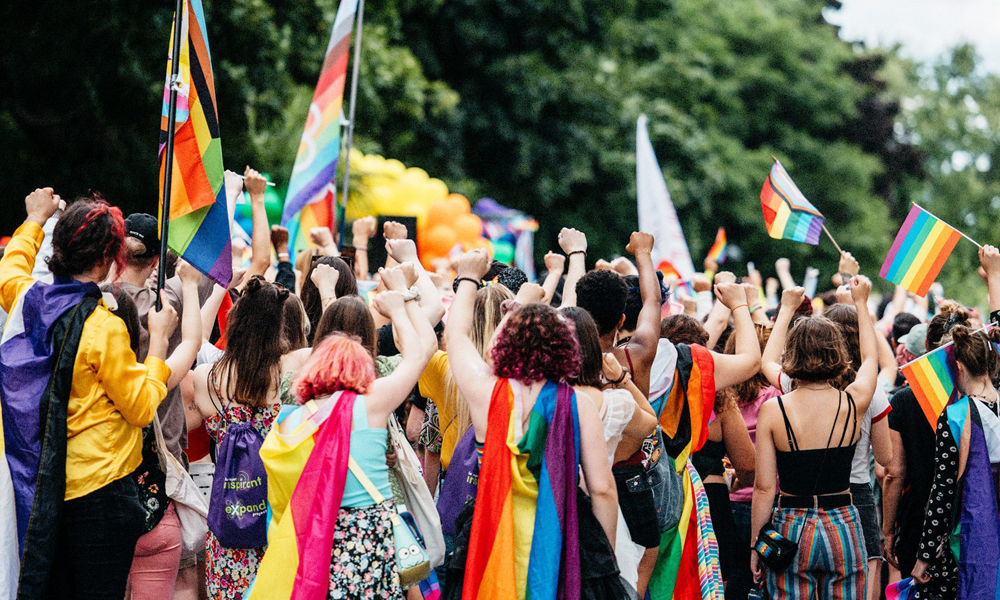If you’re on social media, you already know that trigger warnings are everywhere. But do they actually help people in our community?
In our increasingly sensitized society, “trigger warnings” have become pretty commonplace. These days trigger warnings can be found all over the internet, warning readers that the content they’re about to encounter mentions topics that some readers may find distressing: think sexual abuse, suicide, homophobia, violence, self-harm, child abuse, eating disorders, and so on. An italicized disclaimer at the top of an article about a young person’s struggle with homophobia and violence might read something like this: This article contains descriptions of homophobia and violence that may be triggering for some individuals.
It sounds helpful and well-meaning, but what began as a protective measure has in recent years sparked widespread debate about censorship, mental health and personal responsibility. Also, there’s the question of whether these warnings actually help the people that they are meant for.
The concept originated years ago in therapeutic settings, designed to protect individuals with post-traumatic stress disorder (PTSD) from content that might elicit intense psychological responses. Over time, their use expanded, particularly in academic circles, in online communities and on social media, all with the same intent: to pre-emptively alert individuals about potentially distressing content.
Initially, academics embraced the use of trigger warnings. The philosopher Kate Manne explained, in a 2015 Times op-ed, that in a university setting, “the point [of trigger warnings] is not to enable – let alone encourage – students to skip these readings or our subsequent class discussion (both of which are mandatory in my courses, absent a formal exemption). Rather, it is to allow those who are sensitive to these subjects to prepare themselves for reading about them, and better manage their reactions.” She wrote that exposing students to triggering material without trigger warnings seemed “akin to occasionally throwing a spider at an arachnophobe,” which would impede rather than enable the rational state of mind needed for learning.
As trigger warnings went well beyond the classrooms and became culturally mainstream, some people began to question their effectiveness, or at least their overuse. In the summer of 2021, for example, the Globe Theatre in London, England, forewarned its audiences of “upsetting” themes – including suicide and drug use – in Shakespeare’s classic Romeo and Juliet.
So it was only a matter of time before researchers began to wonder whether trigger warnings truly serve their intended purpose, especially within the 2SLGBTQI+ community…or are a well-meaning yet misguided effort.
Interesting takeaways from recent research
Scrolling online can be an emotional minefield, and on the surface, trigger warnings seem like a considerate heads up to people living with mental health issues. But a new study out of Flinders University in Australia suggests that these types of warnings may not be as helpful as you’d assume.
For her study, Victoria Bridgland, a post-doctoral researcher at Flinders University and the lead author of the study (which was published in the journal Clinical Psychological Science), wanted to put aside the debate over trigger warnings and neutrally look at their efficacy for readers with trauma.
“Like all good scientists, I was itching to find out if any of the claims made by each side of the debate could hold water once taken out of a political context and tested in an experimental framework,” Bridgland said. “Namely, what happens when someone sees a warning (e.g., how do they feel?) and does this alter the way they then react to subsequent material?”
The research, a meta-analysis of previous studies that looked at the usefulness of trigger and content warnings, found that such disclaimers may actually increase people’s anxiety and lead to a “pandora effect,” where the curiosity to proceed is only made stronger.
“We found that the main claims about the potential benefits of trigger warnings – that they either help people to mentally prepare to cope with negative material, or are used to completely avoid negative material – are unfounded,” said Bridgland.
But there was no evidence that warnings blunted people’s emotional reactions to distressing content.
As for whether warnings help vulnerable people avoid unwanted content, there was again no support for that: across five studies that looked at “avoidance,” warnings typically had no effect. In one study, participants were actually more likely to read articles with trigger warnings than those without.
In other words, trigger warnings don’t seem to be working for most people – and in some cases, they might be making things worse.
So, why don’t trigger warnings work?
Researchers and armchair critics seem to agree that trigger warnings don’t necessarily work because they are too general. When people do have a history of trauma, the things that “trigger” them are specific and vary widely among individuals.
Bridgland backed up that theory with this point: warnings merely tell people that distressing things loom, and not what to do about it. In theory, warnings allow people to deploy their “coping strategies,” but that’s assuming they already have those strategies.
“For trigger warnings to work, people would need some kind of pre-training to give them emotion regulation strategies that they could use if they come across a trigger warning,” Bridgland said.
So for trigger warnings to actually work, you have to learn how to face your traumas instead of avoiding them.
“For example, maybe you learn how to watch something in a neutral way rather than in an emotional way,” Bridgland explained. “This might not be something that can be achieved by a trigger warning message alone.”
Are there ways we could make these warnings more effective?
As with all research, studies on trigger warnings have limitations, and we may never be able to say for sure whether trigger warnings are ineffective in every case, for every person. Stay tuned.







POST A COMMENT